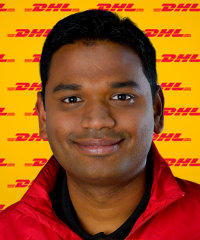How to market your business in the world’s last growth frontier – Africa
Delivered by DHL
At no time in recent years has there been as much optimism about the various opportunities for businesses in Africa. Yet, successfully marketing a brand across such a diverse continent – with over 50 countries, hundreds of languages and various cultures – is no easy task.
This is according to Sumesh Rahavendra, head of marketing for DHL Express sub-Saharan Africa, who says that business owners expanding into Africa need to be aware that in addition to the various challenges relating to language and trade barriers, they need to carefully consider cultural differences, pricing strategies and the political environment, when adapting strategies for marketing goods and products on the continent.
He explains that as opposed to western markets, where the methods to reach consumers are relatively defined, Africa’s unique business landscape gives scope to introduce innovative marketing initiatives that may be relatively unexplored by businesses operating in other markets.
“It is an incredibly exciting time to be in Africa, simply because of the size of the untapped opportunities. With the fastest growing middle class in the world, there is great need for all types of goods – all you have to do is reach out and communicate with the market,” says Rahavendra.
He offers the following advice to business owners looking to expand and market their products and services in Africa:
Each country requires a unique approach
It is important for brands to market their offerings in a way that connects with local consumers. Although large corporates may have global brand marketing guidelines, the staff based in Africa should adapt these guidelines in a way that works best for the local market.
The communication strategy for each country in Africa should be different. While radio commercials might work in South Africa and Nigeria, print advertising could be best for Côte d’Ivoire, billboards might have the biggest impact in Lesotho etc. Business owners need to research and explore local best practices, and consult experienced partners in the country to know what works in each country.
“A recent example was when we (DHL Express) marketed our products via a point-of-sales promotion in Ethiopia. The typical approach would be to offer promotional discounts or give-aways to incentivise walk-in customers. However, our country manager in Ethiopia suggested giving customers a voucher to buy chicken to coincide with the Ethiopian Easter celebration. This non-conventional promotion proved to be a huge success, and highlights the importance of trusting a local team to know what works best in their territory.”
Be consistent
Advertising is expensive, but effective when used correctly. When advertising in any form of media, it’s important to do it regularly, in the right media for your business and to be consistent in your message. Focus on a small selection of media and aim to advertise there regularly to maintain a good awareness of your products or services. The marketing and media environment is very crowded and, for this reason, it’s important to be consistent in both promotional message and look and feel. If you’re an SME, it’s advisable to invest some money in designing a distinct logo, impactful packaging and a good basic range of marketing materials and signage.
Take advantage of modern technology
It is unbelievable how quickly social media and smartphone penetration in Africa has given consumers access to information and various online channels According to Internet World Stats, internet penetration in Africa is 21.3% . It is now all about ensuring that modern technology is utilised to reach the target audience, and making sure that relevant content is created to stimulate engagement with the online community. Businesses should continuously try new things and fine-tune their approach.
“As DHL, we are lucky to have a very successful and well-recognized brand, but we to, began as an SME and have spent the last 45 years building our brand to where it is today,” concludes Rahavendra.


